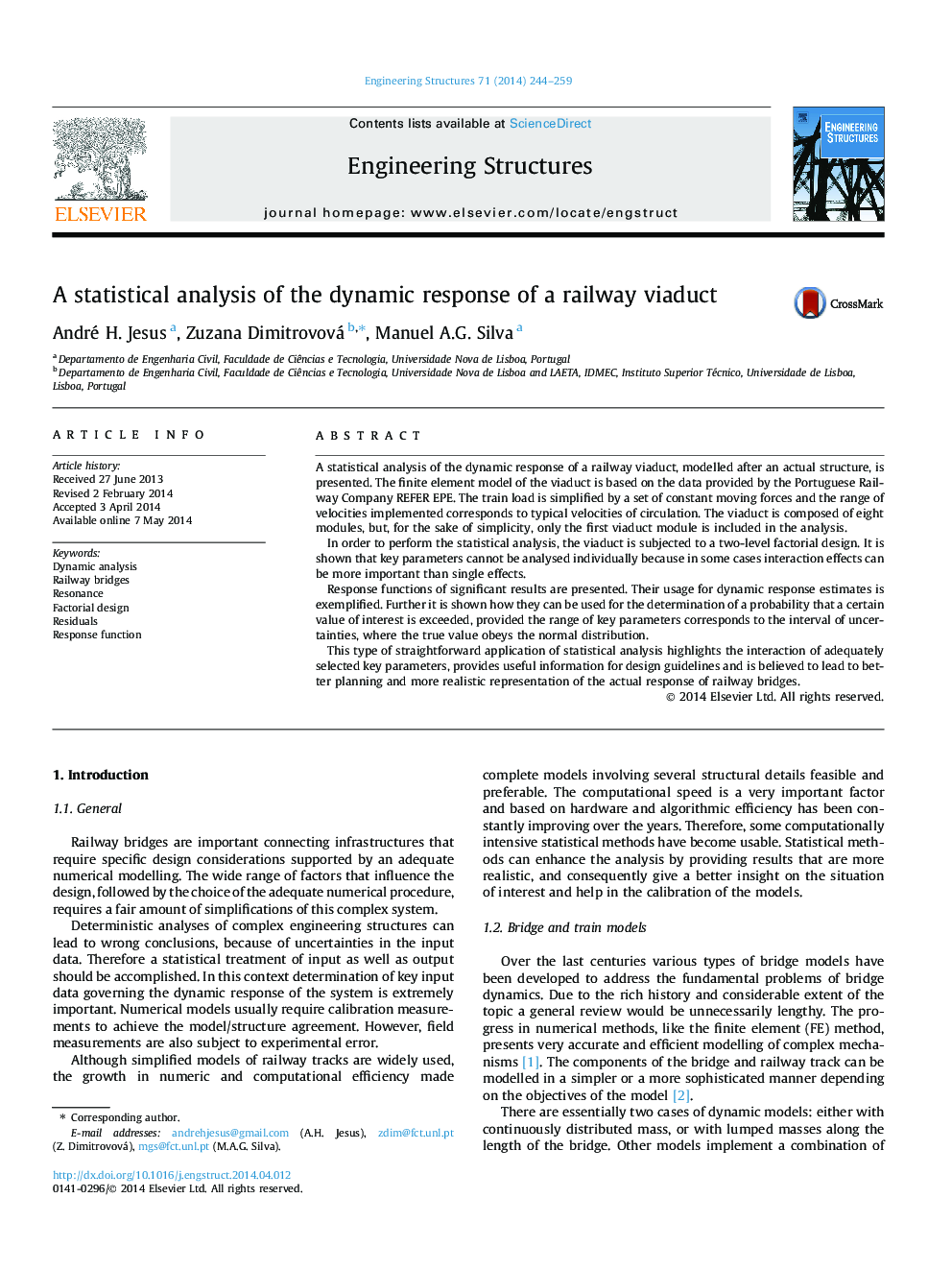| Article ID | Journal | Published Year | Pages | File Type |
|---|---|---|---|---|
| 266738 | Engineering Structures | 2014 | 16 Pages |
•Applicability of a two-level factorial experimentation on a finite element model of an actual structure.•Interaction effects can be more important than single effects.•Response functions are used to estimate the dynamic response.•Response functions to calculate the probability that a result of interest will exceed a specified value.•The ballast stiffness, the load speed and the interaction of ballast mass and load speed are the most important effects.
A statistical analysis of the dynamic response of a railway viaduct, modelled after an actual structure, is presented. The finite element model of the viaduct is based on the data provided by the Portuguese Railway Company REFER EPE. The train load is simplified by a set of constant moving forces and the range of velocities implemented corresponds to typical velocities of circulation. The viaduct is composed of eight modules, but, for the sake of simplicity, only the first viaduct module is included in the analysis.In order to perform the statistical analysis, the viaduct is subjected to a two-level factorial design. It is shown that key parameters cannot be analysed individually because in some cases interaction effects can be more important than single effects.Response functions of significant results are presented. Their usage for dynamic response estimates is exemplified. Further it is shown how they can be used for the determination of a probability that a certain value of interest is exceeded, provided the range of key parameters corresponds to the interval of uncertainties, where the true value obeys the normal distribution.This type of straightforward application of statistical analysis highlights the interaction of adequately selected key parameters, provides useful information for design guidelines and is believed to lead to better planning and more realistic representation of the actual response of railway bridges.
